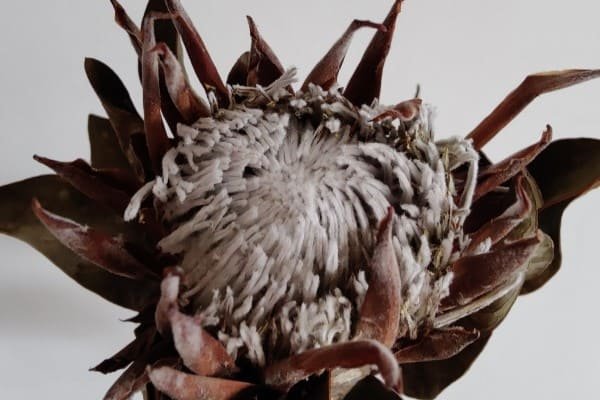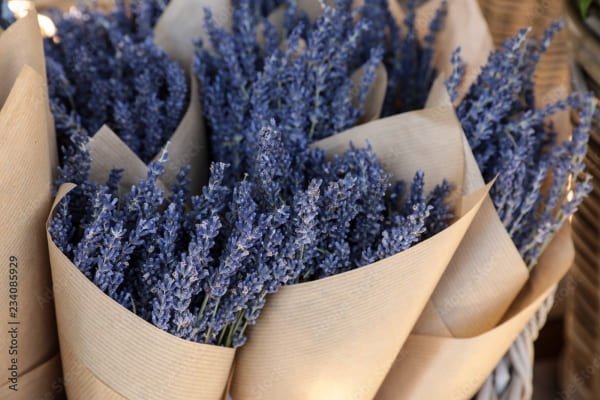


Aromatherapy, the art of using natural plant extracts for therapeutic purposes, has long been revered for its ability to promote relaxation, improve mental clarity, and support overall well-being. Among the myriad of plants used in this practice, lavender stands out as a timeless favorite, renowned for its soothing properties. On the other hand, Protea, while not as commonly associated with aromatherapy, brings a unique blend of earthy and subtle floral notes that complement lavender beautifully. This guide delves into the intricacies of blending dried Protea and lavender for a calming aromatherapy experience, exploring their benefits, blending techniques, and creative applications.
Lavender: Lavender (Lavandula angustifolia) is one of the most well-known and widely used herbs in aromatherapy. Its sweet, floral, and slightly woody scent is recognized for its calming effects on the mind and body. Lavender essential oil is often used to reduce stress, alleviate headaches, and improve sleep quality. The dried flowers retain much of this scent, making them ideal for long-lasting aromatic applications.
Protea: Protea, named after the Greek god Proteus who could change his form at will, is a diverse genus with over 150 species, many of which are native to South Africa. While not traditionally used in aromatherapy, dried Protea flowers bring a unique earthy and slightly sweet aroma to the table. Their scent is subtle, often described as a blend of honeyed earthiness with a hint of florals, which can enhance and balance more robust scents like lavender.
Lavender:
Protea:

Creating aromatherapy blends using dried Protea and lavender is a straightforward process that allows for a great deal of creativity. Whether you’re making sachets, potpourri, or essential oil blends, the combination of these two botanicals can create a calming and aromatic experience.
1. Dried Flower Sachets
Sachets are small, often decorative bags filled with aromatic herbs, which can be placed in drawers, closets, or under pillows to impart a pleasant scent. Here’s how you can make your own dried flower sachets using Protea and lavender:
Materials:
Instructions:
2. Aromatic Potpourri
Potpourri is a mixture of dried flowers, herbs, and spices that is used to scent a room. It’s an excellent way to combine the calming properties of lavender with the earthy notes of Protea. Here’s how to create your own potpourri:
Materials:
Instructions:
3. Calming Essential Oil Blend
If you prefer using essential oils, you can create a blend that captures the essence of lavender and Protea. While Protea essential oil is not commonly available, you can use other earthy oils that complement lavender.
Ingredients:
Instructions:

The versatility of dried Protea and lavender allows for numerous creative applications beyond traditional aromatherapy.
1. Bath Soaks
Create a luxurious and relaxing bath soak by combining dried lavender and Protea with Epsom salts and baking soda. The salts help to relax muscles, while the lavender and Protea provide a calming aroma. Simply mix 1 cup of Epsom salts, 1/2 cup of baking soda, and 1/4 cup of dried lavender and Protea petals. Store the mixture in a jar and add a handful to your bath as needed.
2. Sleep Pillows
For a restful night’s sleep, sew a small pillow filled with dried lavender and Protea petals. The pillow can be placed inside your pillowcase or beside you on the bed. The gentle aroma will help you drift off to sleep.
3. Aromatherapy Jewelry
Create wearable aromatherapy by incorporating dried lavender and Protea into jewelry. For example, you can make a pendant filled with dried flowers or beads infused with essential oils. These pieces not only look beautiful but also allow you to carry the calming scent with you throughout the day.
4. Room Sprays
Create a room spray using the essential oil blend mentioned earlier. Combine the oils with water and a bit of witch hazel in a spray bottle. Shake well before each use and spritz around your home to create a calming atmosphere.
Blending dried Protea and lavender opens up a world of possibilities in aromatherapy, offering a unique and calming aromatic experience. Whether you’re creating sachets, potpourri, essential oil blends, or exploring other creative applications, the combination of these two botanicals can enhance relaxation, promote well-being, and bring a touch of natural beauty into your life. By experimenting with different ratios and additional ingredients, you can customize your blends to suit your personal preferences and needs, making the most of what nature has to offer.